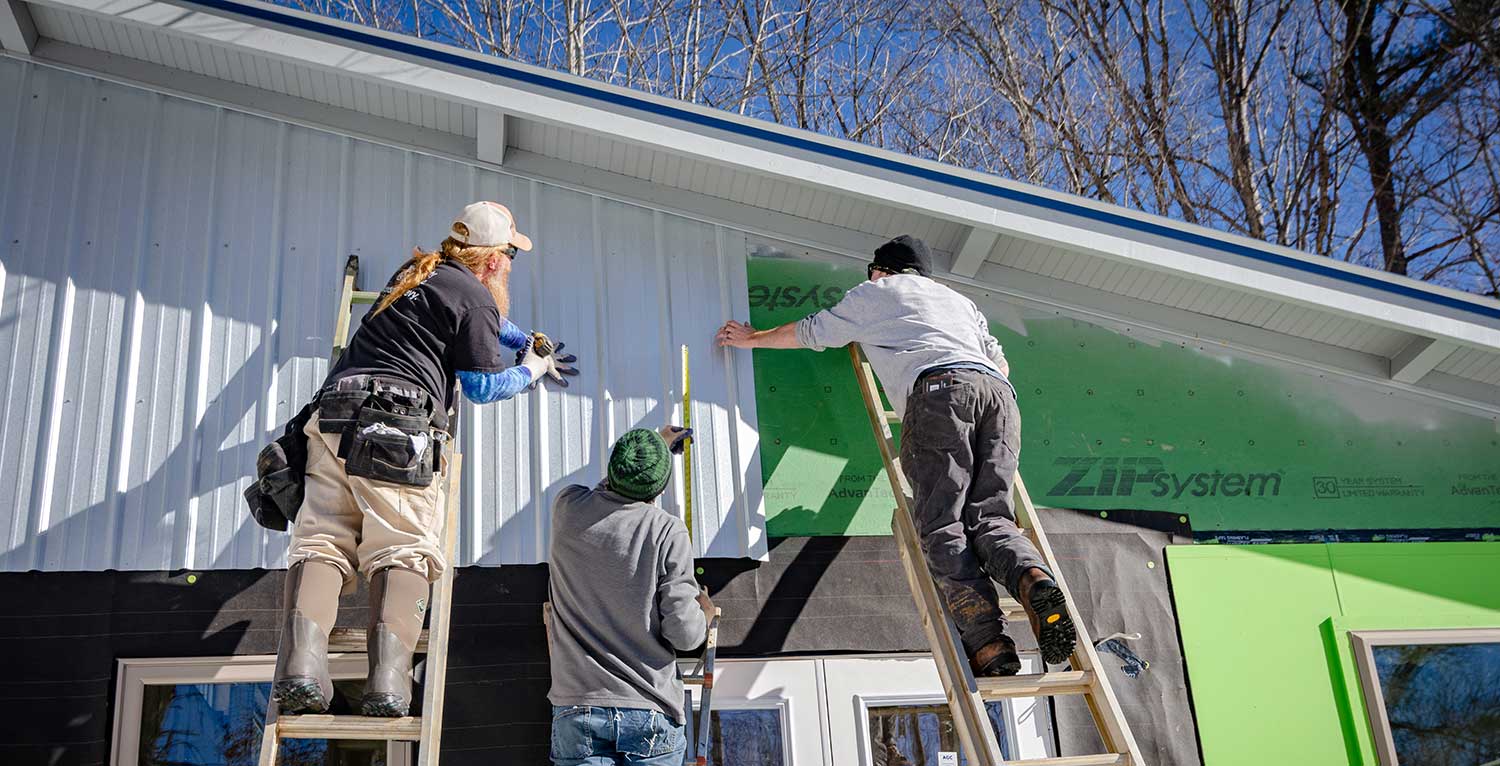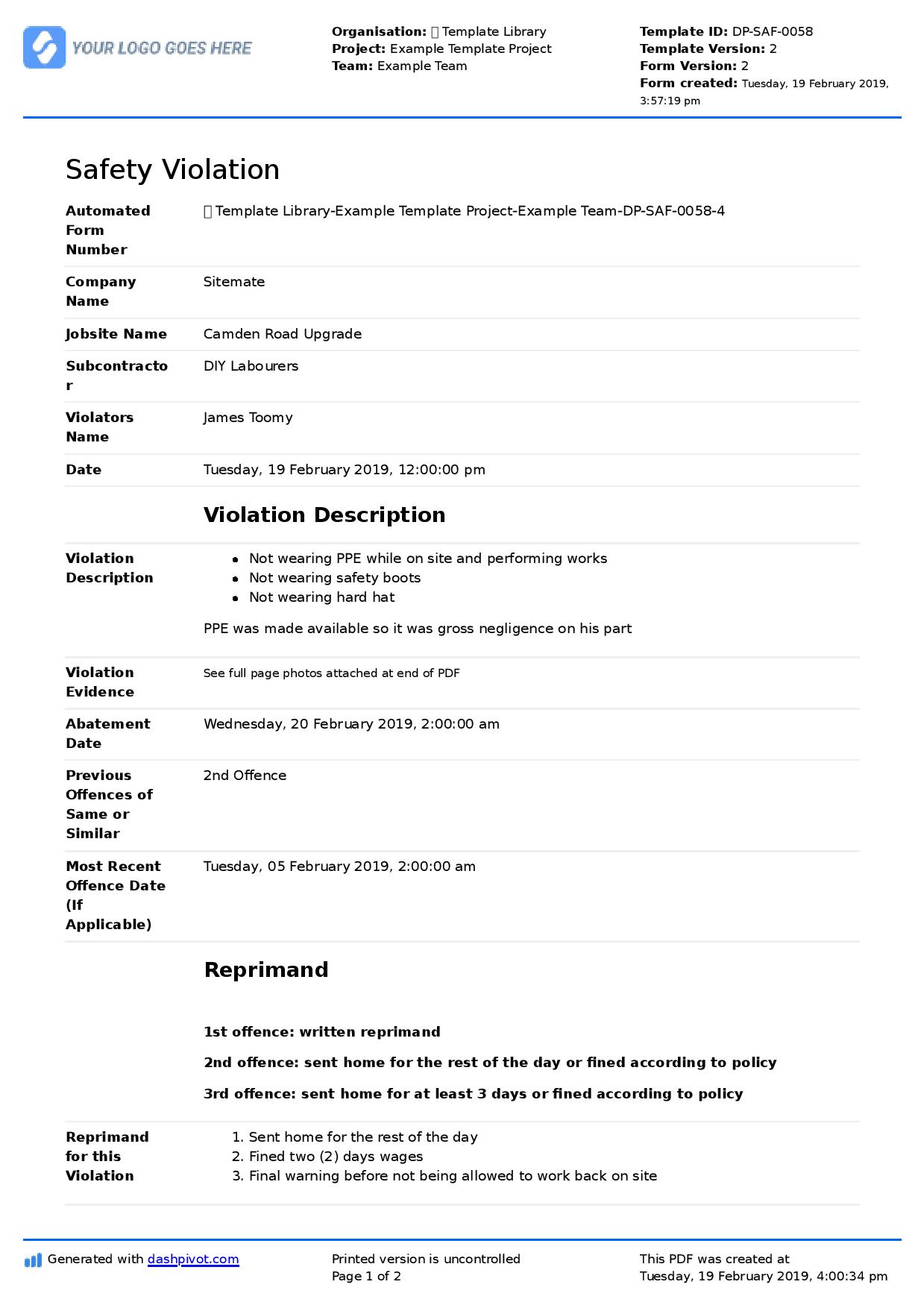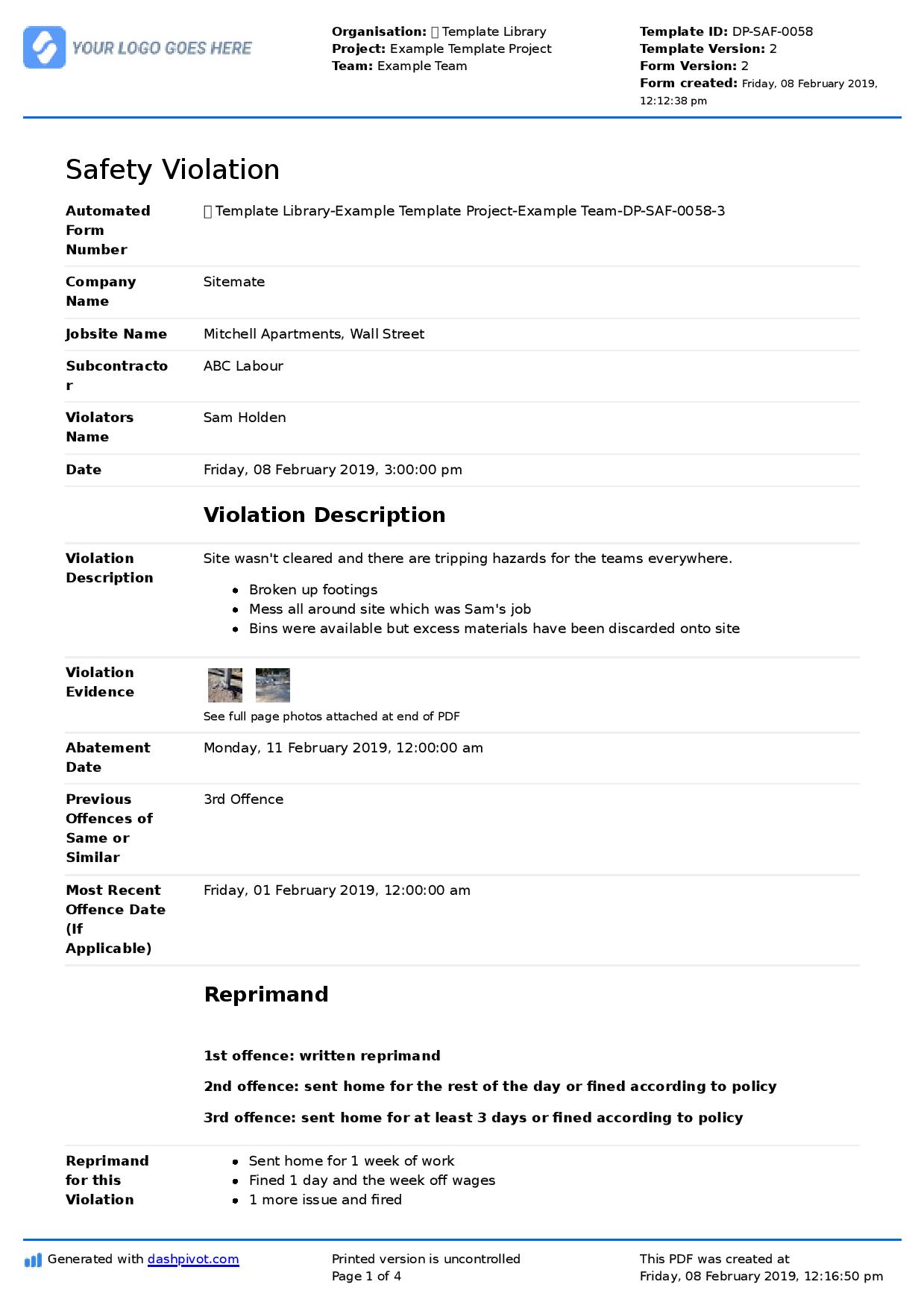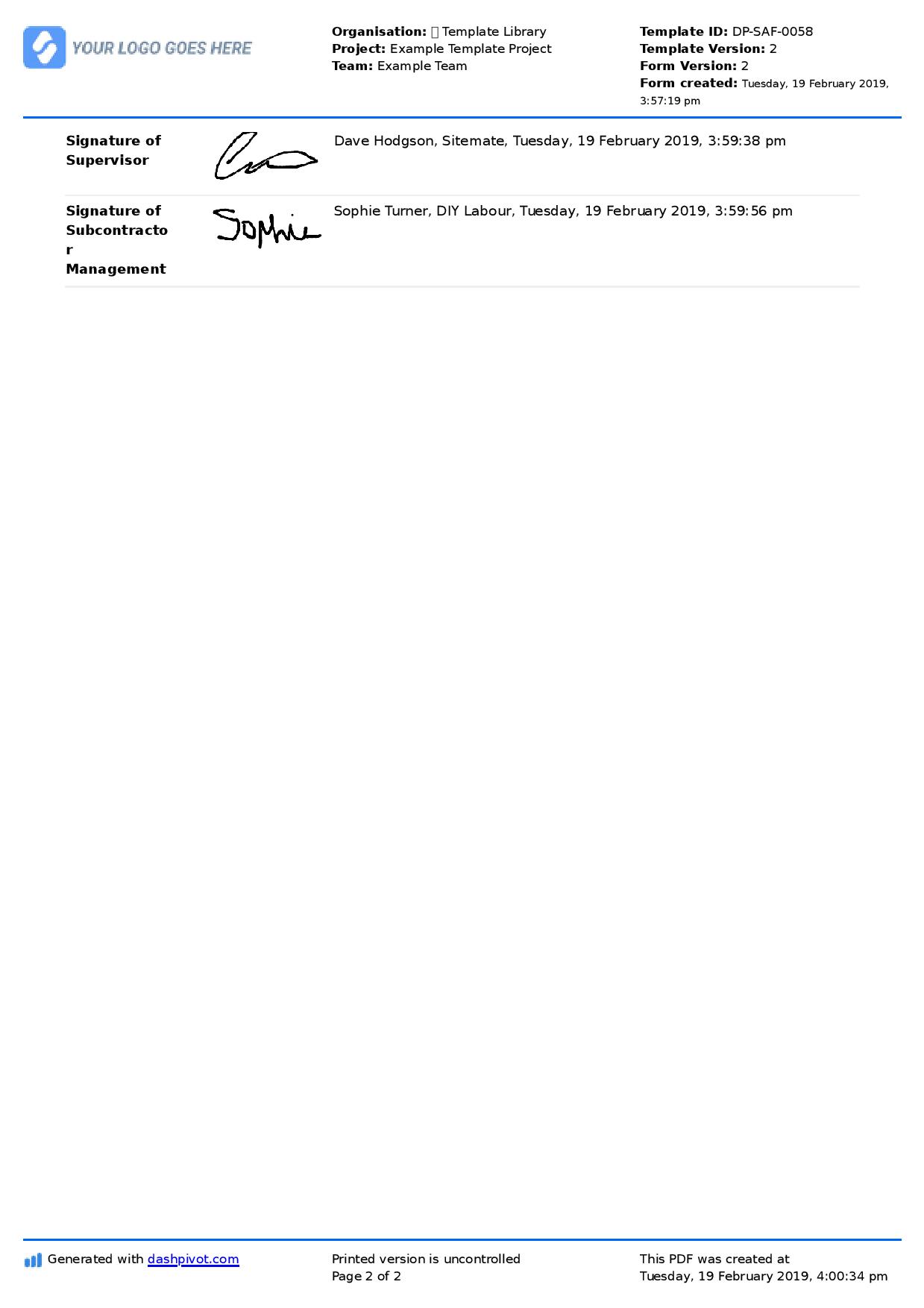Safety – Disciplinary action for not wearing ppe
Disciplinary action for not wearing PPE
In this article, let's cover the disciplinary action for not wearing PPE in the workplace, the importance of PPE compliance, and effective ways on how to communicate such actions the right way.

Wearing PPE
Wearing PPE (personal protective equipment) is a critical part of staying safe in many workplace and on many work sites, and it is extremely important for both companies and individual workers.
PPE saves countless lives every year and enables workers and companies to prevent thousands of minor incidents and major accidents every day.
While avoiding injuries and lowering the chance of injury should be enough of an incentive for workers to wear PPE as much as possible, unfortunately it sometimes isn't - and unfortunately people can't often be there own worst enemies.
Some workers forget to wear PPE, while other workers don't wear PPE on purpose or in the worst case scenario, 'refuse' to wear PPE or a specific type of personal protective equipment.
When PPE is not worn when it is supposed to be worn, companies must step in and create some form of disciplinary action, to ensure that people are doing the right thing for themselves, other people on site, and for the company itself which can inherit some of the negative repercussions and be accountable for people performing their jobs in an unsafe manner.
Disciplinary action for not wearing PPE
No company wants to have to engage in disciplinary action for not wearing PPE, and not many people want to face disciplinary action, but there is of course a time when it is required.
One of the most important parts of PPE and any safety violation disciplinary action is that people were aware that they should be wearing PPE.
If it is not clear that the task or activity being performed requires PPE, then it is much more difficult to issue a warning or any disciplinary action. This is where you must have reliable safety processes and procedures in place. If a risk assessment of the task or work situation determines that PPE is a requirement for worker safety, then PPE is required.
Whether or not PPE is required for a specific task should be contained in a Safe Work Method Statement (SWMS), which includes instructions for workers that they must, or it's essential to wear PPE.
And a PPE requirement is not the end of the story for projects, companies and sites; workers need to be provided with the appropriate PPE and trained in its proper use and application.
For repetitive tasks and activities in main areas, visual reminders like signs and posters remind workers that wearing their PPE is NOT optional and are easy for the company to point to when a workers claims they 'didn't know'.
Once the company and workers are clear on when and why PPE is required, a company can safely monitor and track the wearing of PPE.
Even when there is more clarity and transparency around PPE requirements, disciplining workers for not wearing PPE is a bit of a grey area for both companies and workers.
What if company clarifies when PPE should be worn and a worker ignores this command and gets injured?
The extent to which an employer and supervisors are liable in such a circumstance will depend upon whether they were aware of the worker not wearing the PPE.
While not perfectly black and white, the wrongdoing is typically placed at the feet of the negligent party:
- The company is negligent if it knew about the worker wearing PPE and did nothing
- The worker is negligent if they hid the fact they weren't wearing PPE and then got injured
Workers do not have the right to refuse a lawful and reasonable direction from their employer, which means that if the company knows, then they can (a) provide them with a reasonable request or (b) issue disciplinary action for the not wearing of PPE.
How to communicate disciplinary action for not wearing PPE
The goal of any disciplinary action for not wearing PPE is to effectively 'warn' the worker or employee who is violating the site or company safety rules in the hopes of getting them to wear PPE.
The goal of communicating some disciplinary action to the worker is to not anger or frustrate them, but to inform them that their behaviour isn't in line with what is expected or accepted in the workplace.
The best way to do this is in the same way that you communicate almost all warnings - through a series of warning steps. The safety violation form below is an example disciplinary action taken after a second offence of not wearing PPE.
The disciplinary action for not wearing PPE in this case was being sent home from site and being fined 2 days wages.
You'll see that the notice is very clear and concise about the safety violation (what was done wrong) and the surrounding information which makes it a formal notice.
You don't want to be going back and forth between emails or over the phone about important safety and legal matters.
The 3-strikes rule is common in many workplaces and on many sites, with common disciplinary actions for not wearing PPE being:
- 1st offence: Written reprimand or 'warning'
- 2nd offence: Sent home for the rest of the day and/or fined according to policy
- 3rd offence: Sent home for multiple days and fined according to policy
If PPE continue to not be worn or heeded after 3 offences, then the disciplinary action may be escalated and the person will likely be removed from the site indefinitely or fired.

Use this warning letter form for free.
Rule with the carrot and not the stick
The carrot is often a more powerful force than the stick in getting people to do certain behaviours or obey certain things.
So how can people be incentivised, encouraged or pushed in the right PPE wearing direction?
One of the ways is to make safety a more integral part of your every day culture through toolbox talks, safety moments and other informal practices (along with proper training of course).
By engaging in safety practices like this, and encouraging people to be proactive about their safety every day, you'll find that people are more likely to self-govern themselves and self-police others in wearing PPE.
While disciplinary action for not wearing PPE may be required at times or eventually, you should work as hard as you can and create a culture where people feel uncomfortable when they are not wearing PPE.
This will reduce the number of warnings, violations and disciplinary actions required on your behalf, and keep everyone wearing PPE and staying safer.

PPE (Personal Protection Equipment) Register
Document all of your PPE with all the required information so nothing gets missed or forgotten

PPE Inspection Checklist
Make your PPE inspection checklists easy to complete directly on site, and then download, print or share the results.

PPE Request Form
Easily document and manage the procurement of personal protective equipment (PPE) so workers have the necessary safety gear.

